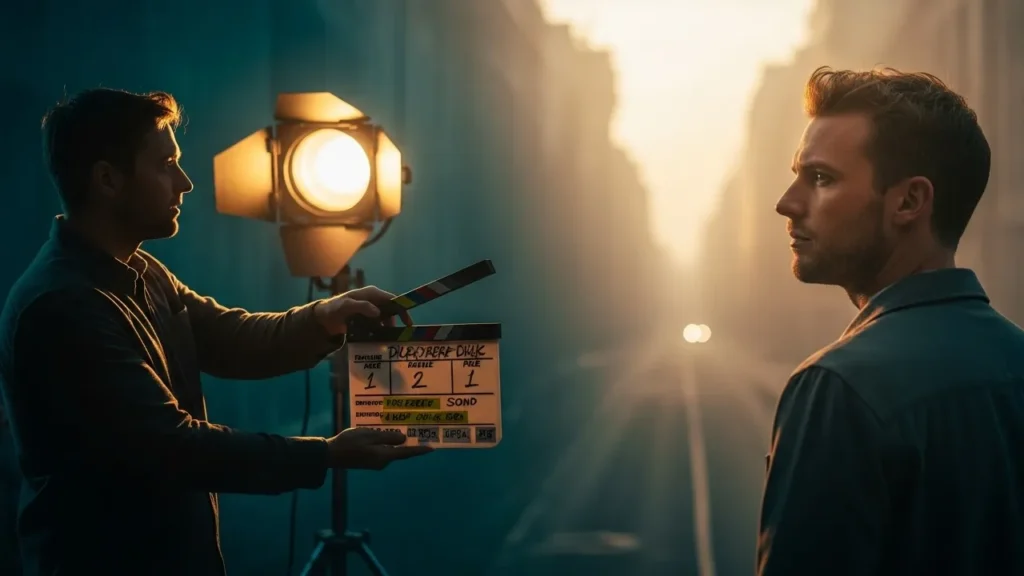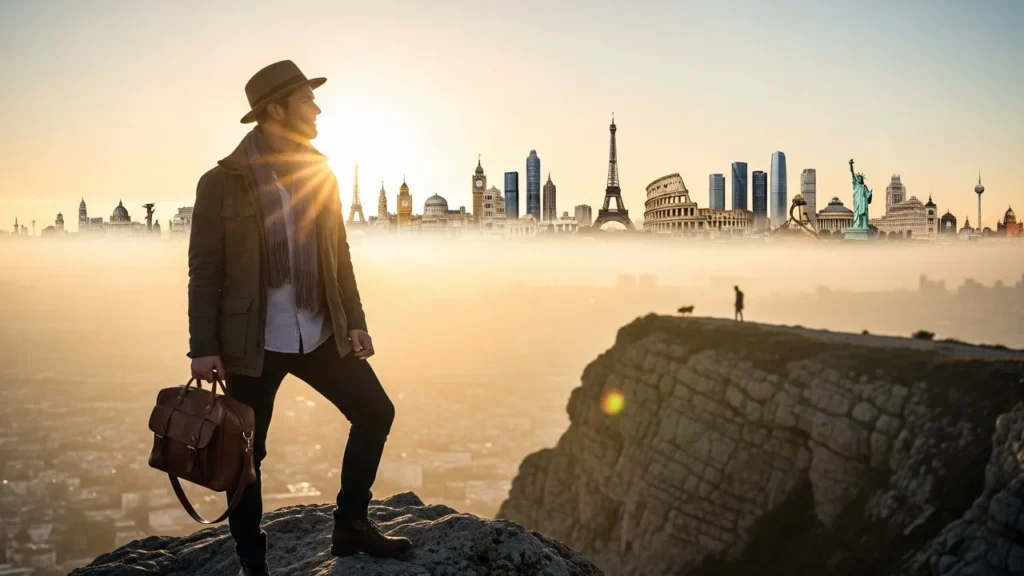How to craft a mood with simple descriptive cues
Mood lives in color and contrast. Ask for teal-and-amber color grading or warm low-key lighting. Specify depth of field — shallow for intimacy, deeper for epic scale. Mention practical lights in the background: a single lamp, passing car headlights, or a street sign. Texture matters: light fog, subtle film grain, and natural skin tones give realism. Add a small human detail — a cigarette, a rain-damp jacket, a trembling hand — to root the viewer. Keep sentences short. Layer commands: main subject, light, background, and a finishing touch. That simple structure yields images that read like scenes from a film, not snapshots.
Top 5 ready-to-use Gemini prompts (short & punchy)
Drop these into your Gemini prompt field and tweak the specifics — lens, era, or wardrobe — to suit your story. Each line below is compact but purposeful. They are meant to spark a specific cinematic mood fast.
- Clapperboard close-up: actor with clapperboard, golden hour rim light, shallow depth, editorial portrait.
- Rainy noir street: umbrella silhouette, wet reflections, neon signs, low-key dramatic lighting.
- Silent conversation: two figures at a diner window, warm lamp light, soft bokeh, intimate framing.
- Deserted train platform: lone traveler, long shadows, cool color grade, cinematic wide angle.
- Memory fade: vintage coat, film grain, backlit haze, wistful expression, close crop.
Composition tricks that read like film direction
Think like a director. Use leading lines to move the eye: rail tracks, hallway tiles, or a row of street lamps. Place the subject off-center for unrest. Tell the prompt which lens to emulate: 50mm for natural perspective, 85mm for intimate portraits, 24mm for environmental drama. Ask for a low-angle shot to empower the subject or a high-angle shot to make them small. Mention movement sparingly — a hair strand in the wind, a falling leaf — to suggest time passing. These small directions make the still image feel alive and cinematic.
Post-capture looks: grading, texture, and editorial polish
After the image is generated, think like an editor. Request color grading cues in your prompt: “teal shadows, warm highlights,” or “filmic contrast, gentle lift in shadows.” Add texture: “subtle film grain, light vignette.” Ask for natural skin tones and avoid over-saturation. If you want an editorial magazine feel, include “clean skin retouch, editorial look, high detail.” For nostalgia, add “muted colors, light fade, soft film halation.” These finishing instructions turn a beautiful photo into a frame that could headline a cinematic feature or an intimate portrait spread.
Practical tips for consistent, high-quality results
Reuse the structure that works: subject, light, lens, mood, then detail. Keep versioning notes. If a prompt produces a near-miss, change one element only: swap “neon” for “warm practical,” or adjust depth of field. Use the same color-grade keywords across related images for series cohesion. Save successful prompts as templates and add a short human note — “close-up, subtle smile” — so you remember why it worked. Consistency builds a visual language that reads like a director’s portfolio. Lastly, experiment with small constraints: tighter crops, a single dominant color, or a single accessory. Constraints often yield stronger storytelling.
These photo prompts are for creative and entertainment use only.





